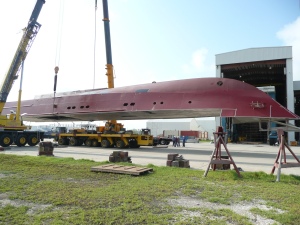The landscape of the maritime industry is changing, with modern-day changes occurring at a faster pace with major waterways such as the Suez canal being renovated and expanded, creating new conditions for shipping which may not be met by current vessels.
The faster pace of modern maritime demands vessels to evolve equally fast which means that changes must be made to the way most approach to the initial process; Project Management and Site Supervision. Building a new vessel also requires Management Control to ensure production of a quality vessel according to Technical Design negotiated with a client and regards to the detailed requirements of senior client management.
So where to begin to ensure good project management which will create a quality build to meet modern challenges? The answer is from review work which will summarise the vessel’s future usages and associated plans. However, with the aforementioned factor of rapid evolution modern project management warrants having other options for the planning phase; requiring notification of amendment recommendations which may be needed for the execution.
This review work, for instance can be started from looking at major changes to seaways; Suez canal expansion, rising sea levels etc. This data will help build a vessel which will be more durable and last longer. We at Henderson International approach this phase with careful consideration of every variable so we have to review the completion plan for the builder; checking for possible errors which will break the vessel’s performance. Our experience allows us to work with clients of all types and if required, provide better alternatives to decisions; helping clients know more about their vessel and what goes inside the planning phase; making the process clearer.
To approach the building process and make the most use of available time and resources a feasible, logical schedule should be created and reviewed. Aside from planning the schedule we also include plans of equipment requirements which will help maintain the workflow with all the equipment needed for a focused approach without any diversions. Equipment required is an important factor which will determine the vessel’s lifespan and overall success as when there is a shortage of necessary parts or tools, the human being who is on a deadline will either skip a detail entirely or use an alternative which has 50% chance of success or failure. However a vessel is a complicated network of systems which is designed around a specific workings which will not function with foreign replacements of pre-designed parts.
The planning phase does not end there as the shipyard itself should also be considered as its scheduling and procedures affects the performance of vessel builders. Since we prefer to have more control over the building of our projects we maintain it by monitoring progress and review its reports from the shipyard; seeing the impact of the project on workings of that shipyard.
Finally, we observe the detailed drawing made by the builder; checking all details, scale and specifications agreed prior to the process. Since we also prefer to have a real-world/practical approach to maritime we observe all details and consider the practical application of the build drawing.
However that was just the planning phase of a new vessel build; next is Site Supervision. This phase is about maintaining control and creating a fail-safe for a project; all done with hands-on approach. Firstly, we maintain contact with project manager/client which gives us updates on progress on a weekly or monthly basis; with recording of delays and provision of advice. Photographic record of production is always attached. Accommodation outfitting, machinery installation, testing and operation analysis would also be monitored.
To make sure that the vessel build functions sea trials are negotiated and run with verification of shipyard testing procedures for machinery, equipment, materials, piping, navigation and other systems within a vessel; all anomalies to be recorded.
Overall, efficient project management and site supervision makes for an efficient vessel with maximum control on the inputs, errors and outputs. Along with that, monitoring that the vessel gets all the required parts prior to construction as it is a complicated structure which relies on specific parts which if replaced, will cause damage and affect the lifespan of this system and lives of its crew in long-term.


